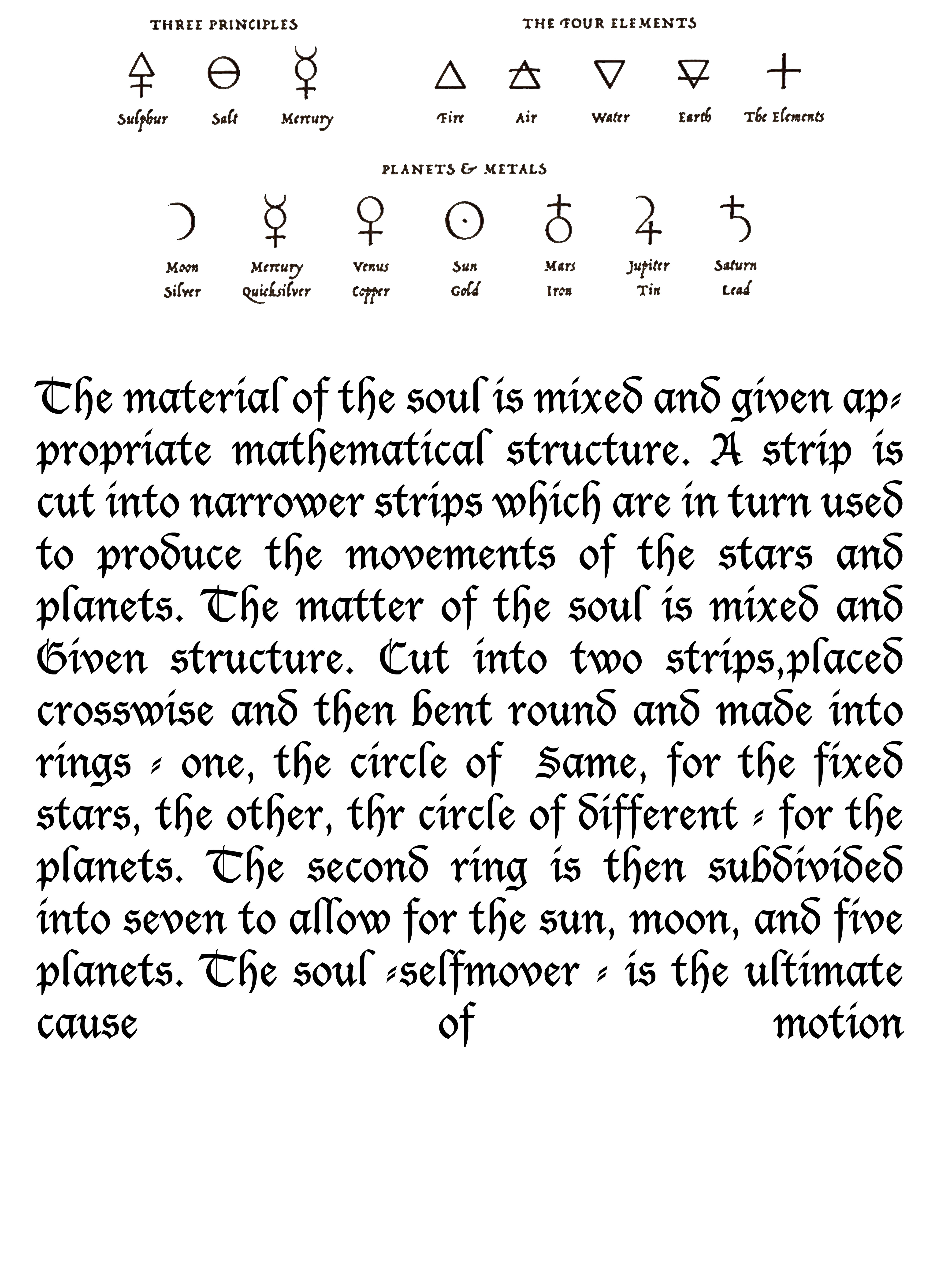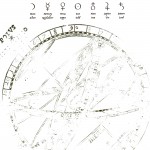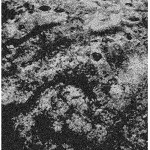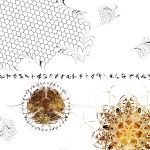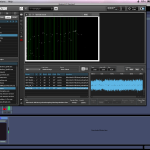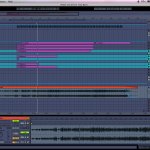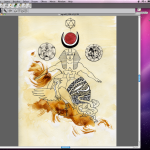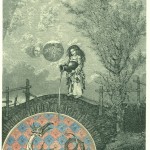Author Archives: humjos13
A – Neuro Reverie Week 7
“Further, as we have seen in chapter 2, evidence from brain scans or other neurobiological tests does not ‘speak for itself’ – it must be spoken for. Images do not convince by means of their own intrinsic plausibility: interlocutors are required, and expert witnesses such as the clinicians who have requested and interpreted the brain scans of the accused must make the claim that the scan shows relevant anomalies”. (Abi-Rachad, Rose pp.178)
Neurolaw. Neuroethics. Neurocriminology. My mind projects a possible permutation a la Philip K. Dick. Imagine a future, where psychic mutations have led to a new kind of science – a new model – complete with its own questions of human ethics. Imagine, a clinician (government employed totalitarian style) analyzing the dreams of three coma-induced precognates – three oracle-gods whose powers must be harnessed for the ‘good’ of humankind. Imagine a world, where a crime can be seen before its inception (seemingly at least). Imagine this poor clinician, so set in the model of the current times, whose world is shaken to the core when he sees his own reflection, scryed in the mirror of the sleeping demiurges. Questions arise: Is he responsible for a crime he has not yet conceived. Does the medium and the image preemptively diagnosis criminal behavior and abnormality or does it call it in to being. Is this evidence inculpatory? Exculpatory? Psy-law. Psy-criminology. Psy-ethics? Are we playing God? Haven’t we always?
A – Neuro Reverie Week 6
“Becoming aware of the social and biological conditions that underpin our actions can, it seems, help each of us develop our competencies and understand and manage our cognitive facilities.” (pp.160)
Developing a cognitive-map, a self-imaging process. Memetics – information stored in the memory bank of society. The self- image is a reconstruction of fragmentary data, filtered through largely unconscious processes. Information stored as logos (history) forms a hermeneutic exegesis of our human cultural history, which is an extension of the cognitive-map. Social cognition reflects the structure and hierarchy of the human brain. A hall of mirrors. Of Mirrors. Reflection and replication of memes – like DNA. THe human world is fit together by the fusion of an invisible soul. Mentalization is key to our cognition (built-in intersubjectivity). From mans synergetic roots, we have had the capacity to mirror – to empathize – with our environment. A symbiosis between predator and prey, internalization of the mind-state of the place and place-beings of our environment.
A is for Alchemy
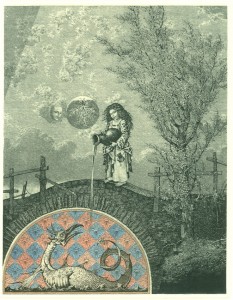 Alchemy, or the “Art of Black Soil”, is a vast field that has spanned several millenia and influenced some of the greatest scientists and thinkers from antiquity to modern times. The student will be undertaking a field study that seeks to understand the Alchemist’s worldview by researching its history and psychology and observing the process of solve et coagula (dissolution and re-synthesis) in his own art, music, and poetry. The alchemical process of transmuting matter from one form to another is a metaphor for the constant recycling of elements found in nature, the psyche and the neuronal recycling of the human brain. The student seeks to show that perhaps more fundamental than the exoteric concerns of alchemy are its esoteric ones, for in order to shape the world around us, we must first distill the elements of our own psyche in a metaphorical suffering, death, and rebirth. Jung saw that the Alchemists where in essence projecting their psychic or inner worlds onto the alembics of their laboratories. For the Alchemists, their work was the work of the divine. They were immersed in the sacred by their work as homo faber and as creator and manipulator of tools. They took their inspiration from the natural world around them and saw the universe as an animated sentient life-form, as evident in their belief that the ores they worked with were embryos that took gestation in the matrix of the Earth or Petra Genetrix. The student hopes to show that matter and psyche are inseparable and that just as the Earth is a womb, so is the mind a matrix for the birth of all things. From Aether, to Mind, to Muscle to Machine humans have become a conduit for the creative force that animates the universe, and by working with this principle, will align themselves with the work of the Divine. The Alchemists realized long ago, as the texts attributed to the mythic Hermes Trismegestus tell us, that the microcosm mirrors the macrocosm, or, “that which is above is like that which is below”. The student will be using his skills in digital music and media as well as his knowledge of poetry to create an anthology of works that illustrates the composting processes that are ubiquitous in the natural world. He will be combining his knowledge and use of organic as well as synthetic mediums to show how the composting of sounds, images and language recycles the neurons of the Alchemist. Jed Rasula addresses the composting of language when he writes “poetry is language disclosed as paradox, where naming does not re-present but dissolves and then reforms creation, where the speaker too is dissolved into the act of speech and reemerges…”
Alchemy, or the “Art of Black Soil”, is a vast field that has spanned several millenia and influenced some of the greatest scientists and thinkers from antiquity to modern times. The student will be undertaking a field study that seeks to understand the Alchemist’s worldview by researching its history and psychology and observing the process of solve et coagula (dissolution and re-synthesis) in his own art, music, and poetry. The alchemical process of transmuting matter from one form to another is a metaphor for the constant recycling of elements found in nature, the psyche and the neuronal recycling of the human brain. The student seeks to show that perhaps more fundamental than the exoteric concerns of alchemy are its esoteric ones, for in order to shape the world around us, we must first distill the elements of our own psyche in a metaphorical suffering, death, and rebirth. Jung saw that the Alchemists where in essence projecting their psychic or inner worlds onto the alembics of their laboratories. For the Alchemists, their work was the work of the divine. They were immersed in the sacred by their work as homo faber and as creator and manipulator of tools. They took their inspiration from the natural world around them and saw the universe as an animated sentient life-form, as evident in their belief that the ores they worked with were embryos that took gestation in the matrix of the Earth or Petra Genetrix. The student hopes to show that matter and psyche are inseparable and that just as the Earth is a womb, so is the mind a matrix for the birth of all things. From Aether, to Mind, to Muscle to Machine humans have become a conduit for the creative force that animates the universe, and by working with this principle, will align themselves with the work of the Divine. The Alchemists realized long ago, as the texts attributed to the mythic Hermes Trismegestus tell us, that the microcosm mirrors the macrocosm, or, “that which is above is like that which is below”. The student will be using his skills in digital music and media as well as his knowledge of poetry to create an anthology of works that illustrates the composting processes that are ubiquitous in the natural world. He will be combining his knowledge and use of organic as well as synthetic mediums to show how the composting of sounds, images and language recycles the neurons of the Alchemist. Jed Rasula addresses the composting of language when he writes “poetry is language disclosed as paradox, where naming does not re-present but dissolves and then reforms creation, where the speaker too is dissolved into the act of speech and reemerges…”
ABCs and 123s – weekly log and field notes
[catlist tags=a-logs date=yes excerpt=yes excerpt_size=30]
Neuro Reveries
[catlist tags=a-bachelard date=yes excerpt=yes excerpt_size=30]
Poetry
[catlist tags=a-poetry excerpt=yes excerpt_size=30]
Multimedia
A is for Alchemy: Granular Processing
Spring Term Papers
As readers we are not passive consumers of finished products. Each time we read we consummate with words in a ritual act of hieros gamos. The reader is motivated to reassemble texts into new and different word-worlds. The writer is responsible for the inception of a world that has more connections and meaning seeded within it than they can be possibly aware of. Poetry is especially rich with latent meaning and infinite possibility. Upon reading, poetry breaks down into nutrient rich soil, in turn fusing both the poem and the reader. This Compost: Ecological Imperatives in American Poetry explores this process by drawing on the works of a diverse array of American poets. In the book, quotation and tropic language are the composting mediums that turn the soil. The author, Jed Rasula, posits that language is biodegradable; it decomposes just like organic matter. Over time the poem starts to disintegrate and composite identities emerge from the ashes of the old. Word and language are animate; they live and die by the same rules that all life forms do. Populations of word organisms form semiotic biospheres; their overlapping meanings are sympatric cohabitations of ecological niches; their deaths alchemical transmutations. Like This Compost, this paper is both philosophical discourse and anthology of mutilation. Its focus is on the Nigredo stage of alchemy, or putrefaction, that occurs in the first stages of decomposition. It is in this stage that soma becomes fertile black earth, the word-matrix that births new life condensed into meaning.
Solve Et Coagula is a stitch work composition of word and image modeled after Susan Howe’s The Midnight. Here, the process of solve et coagula or dissolution and synthesis, is both method and subject. This paper is inspired by my work with digital sound design and the graphic arts as well as the mythos and history of magic. This work is intended to be a granulation and condensation of the language and symbols of alchemy as well an illustration of my creative process. I use the repetition of words and sounds (parachesis and alliteration) to induce a dissociated state within the mind of the reader. Out of this dissociation, composite identities emerge. The composting of image, word and sound is simultaneously a genesis of new life. Latent meaning is interlaced with the sounds of words and the images they evoke. The Midnight explores the thin veil between text and image, object and subject. Solve Et Coagula is a similar reflection on the space between music and noise and the matrix or margin between order and chaos. It is out of this place that new word-worlds are born. In alchemical terms, the adept fuses with their sacred texts, sewing pieces of their soul into the fabric of a universe perfuse with signs. This paper is intended to be coded and cryptic, mirroring ancient texts attributed to the likes of Hermes Trismagestus or Zozimos of Panopolis. By trying to decipher its coded language, the reader turns words like soil, populating its symbols with the germ of meaning. In The Midnight, Howe weaves her personal and familial history into a poetic memoir. Here, these characters are replaced by the mythic and archetypal figures of alchemy and magic.
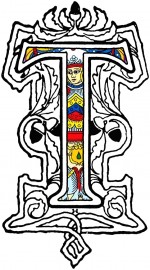
Ta- Week 8 Log
- 10 hours reading – The Way of Tarot, The Metabarons (A. Jodorowsky); Our Dreaming Mind (R. van de Castle); The Sacred and the Profane, The Forge and the Crucible (M. Eliade); Semiotics (Daniel Chandler); The Poetics of Reverie (G. Bachelard)
- 4 hours conversation on Tarot, the archetypes and the unconscious
- 6 hours Tarot familiarization – mandala construction, meditation, and writing
- 3 hours practice reads with friends
- 4 hours poetry, reverie, and writing inspired by Tarot
- 3 hours note taking and review
- 8 hours writing and editing term paper
- 3 hours editing video for poetry observed
- 2 hours editing wordpress
Total – 40 hours

Ta – Week 7 Log
- 12 hours reading – The Way of Tarot, The Metabarons (A. Jodorowsky); Interpreting the Signs of the Times: Beyond Jung, The Magician in the World: Becoming, Creativity, and Transversal Communication (I. Semetsky); Our Dreaming Mind (R. van de Castle); The Sacred and the Profane, The Forge and the Crucible (M. Eliade); Semiotics (Daniel Chandler); The Castle of Crossed Destinies (I. Calvino); The Poetics of Reverie (G. Bachelard)
- 4 hours paper outline and brainstorm
- 5 hours Tarot familiarization – mandala construction, meditation, writing.
- 3 hours practice reads with friends
- 6 hours poetry, reverie, and writing inspired by Tarot
- 2 hours note taking and review
- 3 hours research online for poetry observed (vimeo account, etc)
- 3 hours preparing for and filming poetry observed
Total – 38 hours

Ta – Week 8 Poetry
The Magician
The Magician points to Earth and Sky;
a banded piece of agate – a looking glass – rests in hand.
I am cradled between a nurse log and the tangled roots of an ancient tree;
birth and death are one here, our mother makes no distinction.
The forest exhales deeply into my lungs,
expanding them until, I am lifted.
A glass portal appears before me, nestled in soft folds of old growth.
I enter.
The cloud-sky space between fractal lines suddenly darkens;
my eyes begin to pulse, the world is bathed in emerald-green drops of dew.
My Heart is all that remains,
the rest – disintegrates into a swirling prismatic void of fern and cedar.
I can hear the voice of matter here.
Everything is vibrating.
Warm-green Goddess,
I hear you, I am you.

Ta – Winter Term Paper

Ta – Week 8 Bachelardian Reverie
“Reverie is an oneiric activity in which a glimmer of consciousness subsists. The dreamer of reverie is present in his reverie. Even when the reverie gives the impression of a flight out of the real, out of time and place, the dreamer of reverie knows that it is he who is absenting himself – he, in flesh and blood, who is becoming a “spirit”, a phantom of the past or of voyage.” (Bachelard pp. 150)
The faces of the dreamer form an infinite corridor of pillars facing a ubiquitous center . A sea of eyes see all and nothing. The dream navigator knows this place, where thresholds of awareness open and close perpetually. The dream navigator explores this labyrinth – this corridor we know as night.
The unconscious night is the birthplace of myth; it has no end and no beginning, no history, no future – it is timeless. It is a place of knowing – knowing which knows no bounds. The onieronaut explores the realms of night and day. He journeys to destinations unknown, along a fan of never-ending, never-beginning roads. He travels along both sides of a great mirror. Reverie is the dream waking within us; for if the lucid dreamer finds clarity in the hall of pillars – the unconscious night – the dream finds lucidity in the life of the waking dreamer.

Ta – Week 7 Bachelardian Reverie
“A glimmer of eternity descends upon the beauty of the world. We are standing before a great lake who’s name is familiar to geographers, high in the mountains, and suddenly we are returning to a distant past. We dream while remembering. We remember while dreaming.” (Bachelard pp. 102)
One may say, “I have lived many lives”. Who is this “I” they speak of? Is it the “me-now”? Perhaps this “I” is all the pearls of “me-now” strung together by the thread of memory. Why the separation, why differentiate between self and other? I’ve heard this called the Lucifer Experiment. What more true a place of innocence (where Adam has not yet bit the apple) than that of childhood? At the nucleus of our being is the child-poet. Child-nature is a perpetual state of wonder and of dreaming that lies at the heart of every poet. In adulthood, it seems, one is always seeking to return to child-nature. When the poet seeks childhood in their reverie, they are not seeking for the memories of childhood but for the experience of childhood. They are seeking freedom! Freedom, not from the external world, but from the confines of the auto-biographical self. Reverie, by its nature, is timeless. When lost in reverie, the poet sits at the confluence of three great rivers where past, present and future coalesce. This is where the “me-now” sees with the “I” of a child-dreamer, and “A glimmer of eternity descends upon the beauty of the world.”

